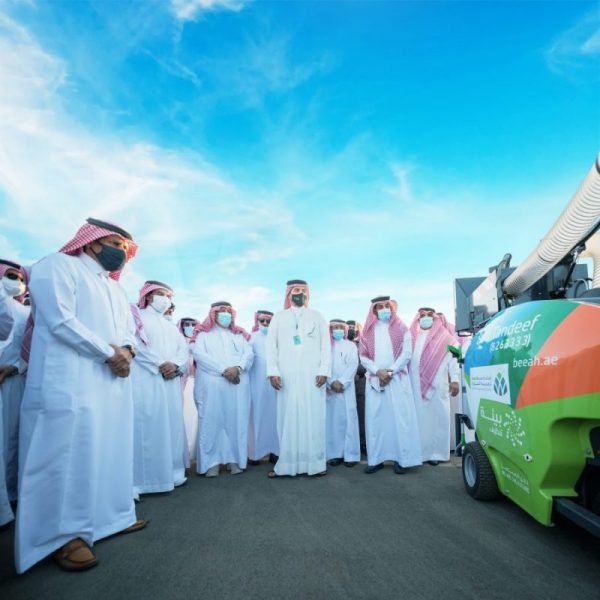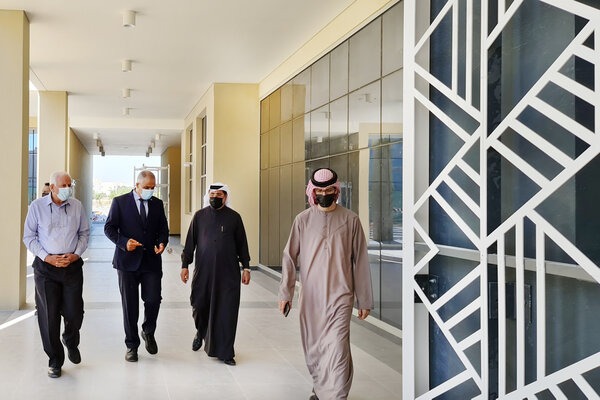Going “Green” Roofs
Green

April 14, 2020, 4:11 pm
By: Dr Samar Hamad
Green roofs are popular green design features that can be incorporated into the design of highly dense urban centres to enhance the sustainability and energy performance of buildings without disrupting the existing architecture. They are typically installed on flat (or slightly sloped) rooftops of any building or structure (such as residential and commercial high-rise buildings, parking garages, courtyards, etc.). Green roofs existed since ancient human civilization. The Hanging Gardens of Babylon are one of the oldest known examples of green roof. They were originally grown on stone pillars and roofs nearly 2500 years ago. Europeans also grew grass and sod on rooftops to insulate their houses during the middle ages. In modern times, green roofs became popular across the European cities in the late 1960s and early 1970s as an energy conservation measure to reduce the heating/cooling loads of buildings. Since then green roofs have become an appealing solution to improve the quality of life in cramped inner cities. Currently, cities and towns around the world are installing a variety of modern green roofs systems for their various eco-friendly, energy efficiency, and aesthetically pleasing properties.
Benefits of Green Roofs
Growing a green roof by planting a layer of vegetation to partially or entirely cover the rooftop of a building is an effective way to create more pleasant urban environment. Turning the often-useless building roofs into a green space can offer a wide range of benefits, such as:
- Improved urban air quality: Green roofs can be installed as a measure to combat air pollution and cut greenhouse gas (GHG) emissions from buildings. Photosynthesis processes by the vegetation planted in green roofs produce more oxygen and absorb the carbon dioxide released by the buildings’ mechanical systems, vehicles, and industrial facilities.
- Additional building insulation: Green roofs provide additional insulation to buildings and prevent heat gain/loss through the roof layers. They help lower those buildings’ heating, ventilation, and air condition (HVAC) loads and improve the efficiency of their mechanical equipment.
- Stormwater drainage: Green roofs serve as a sustainable drainage system for stormwater. They retain rainwater in plants and growing medium, which prevent flooding during the rainy season. According to US National Park Service (NPS), green roof systems retain 80% of stormwater compared to 24% retained by conventional roofs.
- Mitigating urban heat islands: Green roofs are effective solution to moderate the heat absorbed, trapped, and re-radiated by the concrete buildings and pavements in highly dense urban areas, which increases the local temperature of these urban areas compared to their surroundings (also known as urban heat island effect). Less heat is absorbed by the vegetation layer, while the solar radiation help to evaporate the water in the growing medium leading to lower temperatures.
- Roof protection: green roofs also help to prolong the lifespan of roofing materials as the vegetation layer provides extra protection layer form heat and wind.
- Provision of urban amenities: Green roofs also serve as leisure space for resident/occupants; they add to the aesthetics of the urban landscape and create attractive views from surrounding buildings.
Although adding an extra layer of vegetation can save energy and lower the running cost of buildings, the initial cost of installing those green roofing systems can be substantially high. They also require frequent maintenance and regular inspection of the roof drainage flow path.
Types of Green Roofs
Green roofs may have unlimited forms and designs with different types of plants, shrubs and flowers depending on the regional climatic conditions, the local micro-climate of the area, and the roof type and structure. Installing a green roof require adding specific roofing layers other than the regular roofing materials. Each layer serve a certain function to support the growth of the planted vegetation layer and protect the building structure beneath the plantings. These layers include a growing medium, filter and drainage layers, waterproofing, roofing membrane support, thermal insulation and vapor control layers, and structural roof support. The local green roof codes, standards, and regulations must be considered to appropriately install green roofs and promote the sustainability of the roofing structure. According to the US Environmental Protection Agency (EPA), two categories of green roofs systems can be identified:
- Extensive green roof systems: These are lightweight systems with fairly small roof loads. They have thin layer of growing medium (less than 6 inches deep) that require minimal irrigation and little maintenance. However, limited plant choices can be offered by such systems and they are inaccessible to users in most cases.
- Intensive green roof system: These systems are often accessible to residents/occupants and they can accommodate more variety of vegetation choices as they have deeper growing medium. However, on the other hand, they have greater roof loads and require regular irrigation and more frequent maintenance with higher initial and running costs.
With the recent technological advancements in smart green building technologies, innovative modular green roof systems have emerged as an optimal green roofing solution with lower initial and running costs and minimal waste. These are technically advanced green roofing systems in the form of modular trays typically contain all the multi-layer components of green roof systems, including filters, drainage, growing media, and variety of vegetation options. In many cases, the systems are integrated with energy efficiency features such as renewable energy sources (solar panels and micro wind turbines) coupled with smart drip irrigation systems. The integrated systems offer simple, flexible, and cost-effective solutions to the complex issues of urban areas, leading to increased economic profit, better ecological benefits, and improved sustainability qualities.
More information is available at:
U.S. Environmental Protection Agency Website: https://www.epa.gov/
US National Park Service (NPS) website: https://www.nps.gov/tps/sustainability/new-technology/green-roofs.htm









